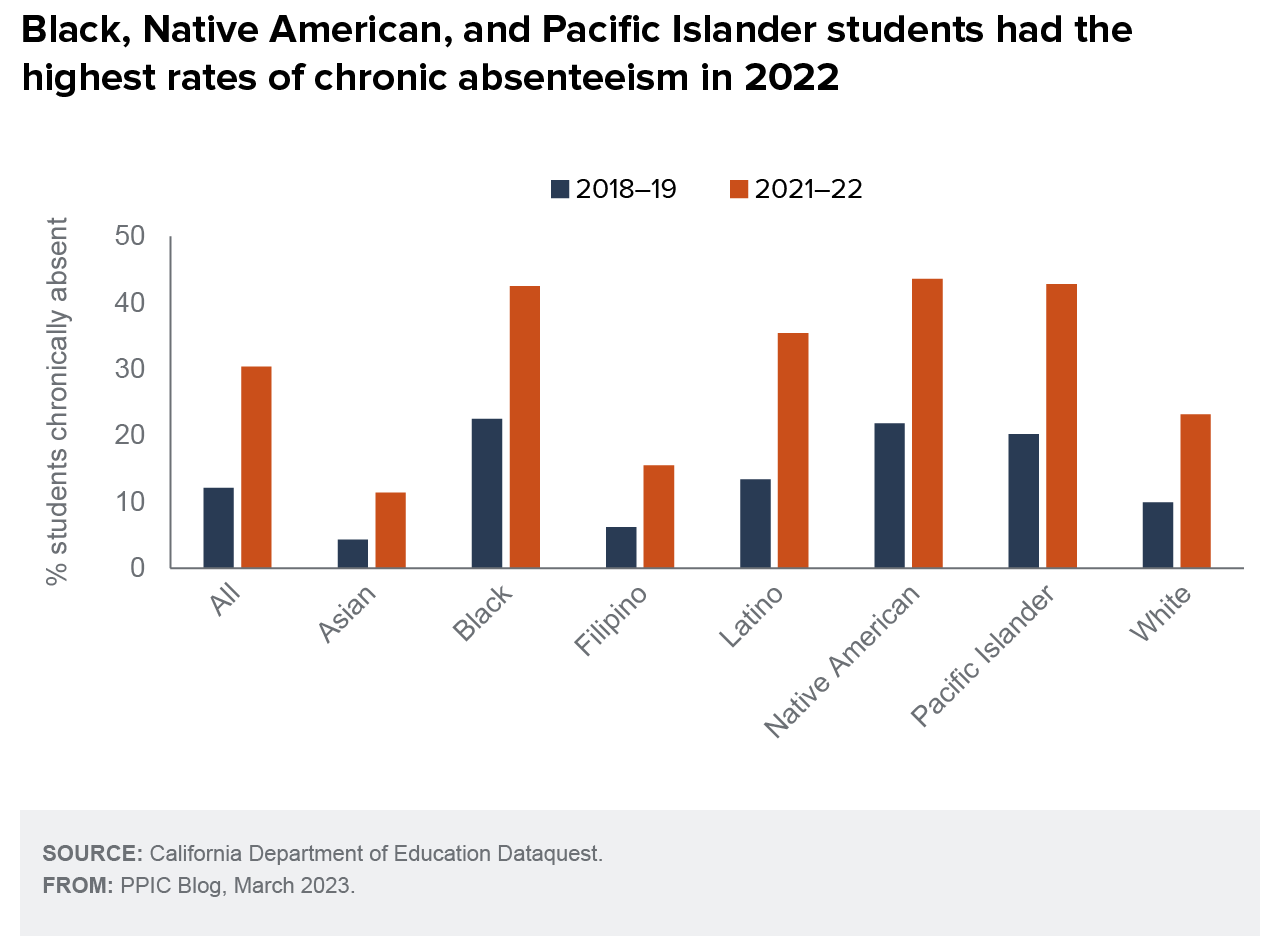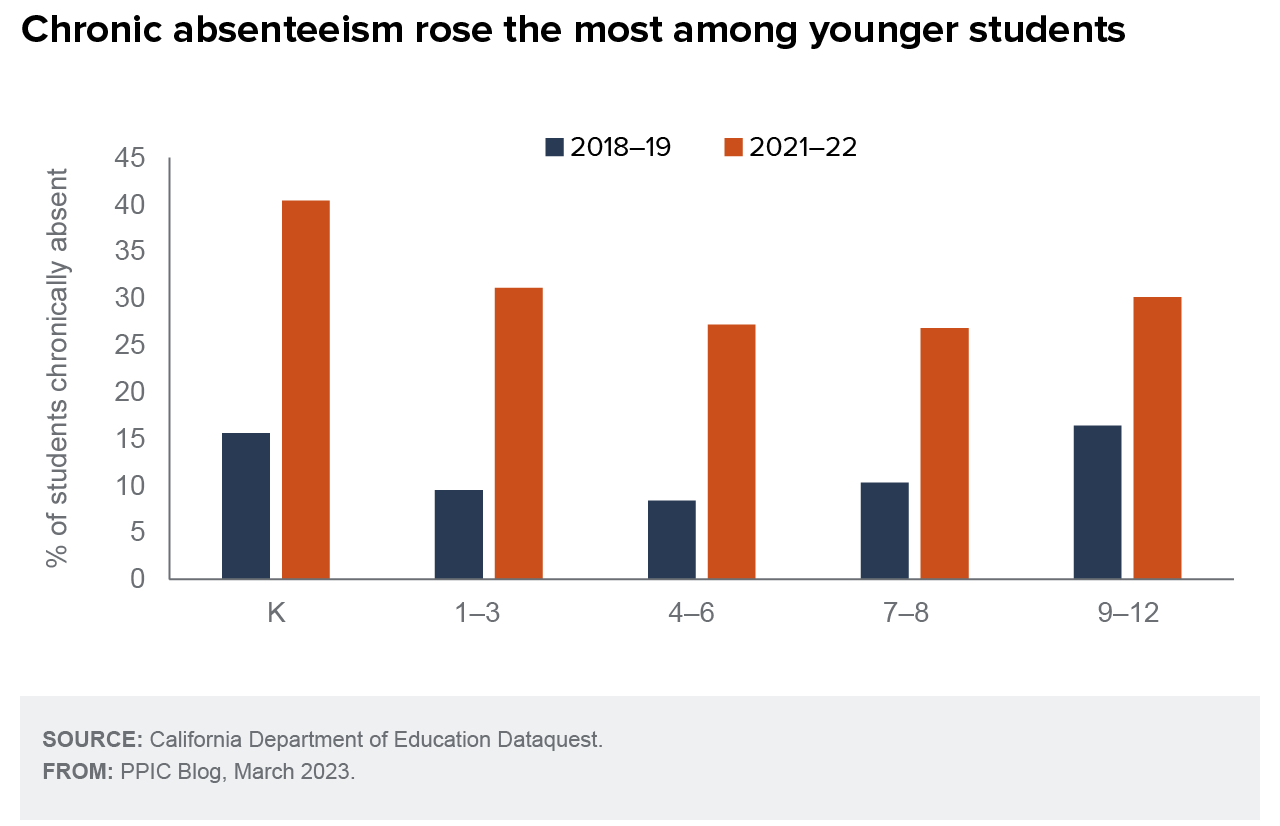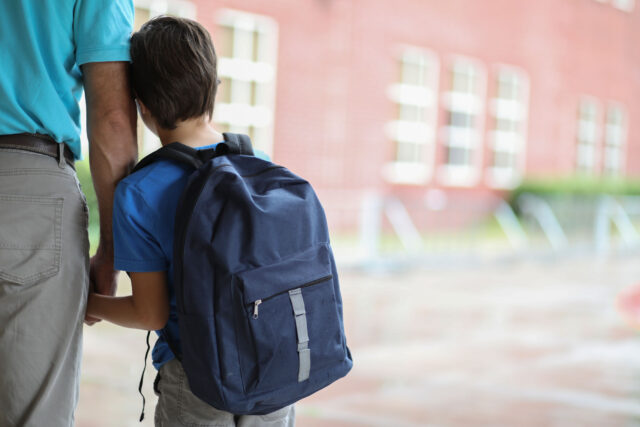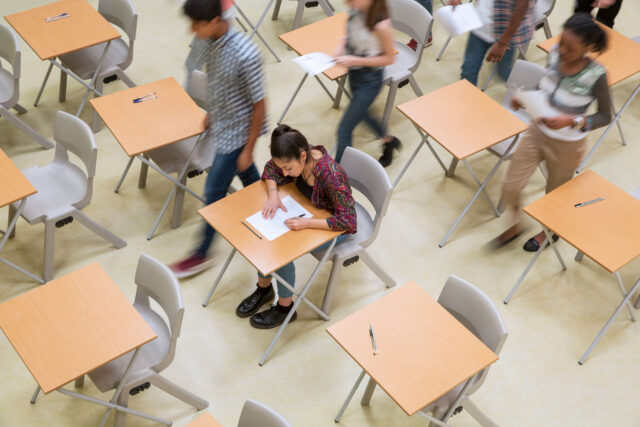Thirty percent of California public school students were chronically absent from school in 2021–22—a near tripling of the percentage in 2018–19. Although we do not know if this stark increase in chronic absenteeism, defined as missing at least 10% of the school year or at least 18 days, will continue, the data from last year raises concerns about the pace of students’ learning recovery after the educational setbacks of the COVID-19 pandemic.
Absenteeism rose substantially for nearly all student groups. However, we do see variation across demographic dimensions. Among racial/ethnic groups, Black, Native American, and Pacific Islander students experienced the highest rates of chronic absenteeism, exceeding 40% in 2021–22. Latino students also saw a significant increase, with absenteeism rates more than doubling from around 13% in 2018–19 to approximately 35% three years later. It is important to note that this measure of chronic absenteeism—which includes both excused and unexcused absences—actually underestimates the true scope of missed school because it does not include students who missed fewer than 18 days and does not capture exactly how much instruction students missed (some students may have missed many more than 18 days).

We also see disparities across other demographic groups. Students with disabilities, those from low-income families, and English Learners had higher rates of chronic absenteeism—41%, 37%, and 35%, respectively—than the statewide average. Additionally, students who were homeless or in the foster system experienced some of the highest chronic absenteeism rates: 46% and 47%, respectively. There were no significant gender differences.
The spike in absenteeism is starker in the early grades. Before the pandemic, chronic absenteeism was highest in grades 9–12 (16%). In 2021–22, absenteeism among high school students rose to 30%, but this was surpassed by the rate for kindergarteners (40%) and was similar to the rate for grades 1–3 (31%).

This grade-level pattern holds true across most racial/ethnic groups, with rates of chronic absenteeism highest for kindergarteners and grades 1–3, lower for grades 4–8, and relatively high in grades 9–12. Altogether, over half of Black, Native American, and Pacific Islander kindergarteners were chronically absent in 2021–22, as were nearly half (48%) of all Latino kindergarteners. This finding is especially worrisome since research indicates that chronic absenteeism tends to snowball: students in early grades who are chronically absent are more likely to be chronically absent in later grades.
We do not yet know if this recent spike in chronic absenteeism was temporary or not. High absenteeism may have been caused by school districts’ isolation and quarantining policies in that year, or it may reflect a new reality in families’ and students’ connections to schools. Part way through the 2021–22 school year, Los Angeles Unified estimated that about 40% of the district’s chronic absenteeism was due to quarantine and isolation, leaving 60% to be explained by other factors. Early indications from this school year suggest chronic absenteeism is still well above pre-pandemic levels in several school districts across the state and country.
This spring, the California Department of Education and the California Department of Public Health plan to release revised isolation and quarantine guidance in the hopes that fewer children are kept home unnecessarily. However, even if absenteeism does return to 2018–19 levels, this cohort of students may see lasting effects from these missed days.
Stay tuned for an upcoming post that examines whether there is a link between absenteeism and student learning, and explores the implications for educational recovery.






